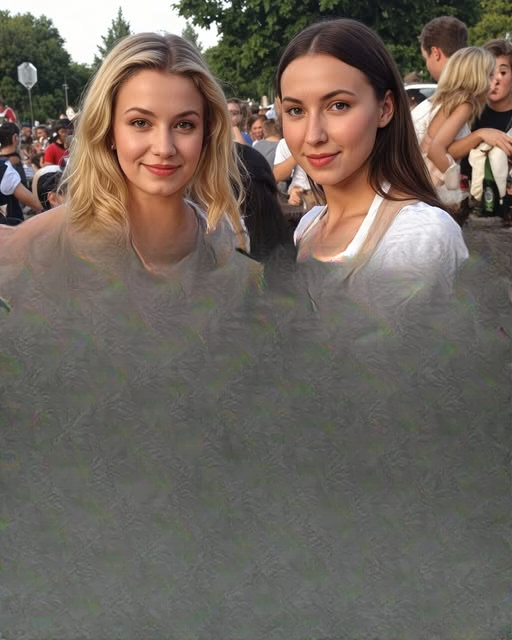
Lena had always been intrigued by unusual health fads. Every time she opened her social media feed, there seemed to be a new headline claiming a quick fix, a hidden cure, or a strange routine that supposedly transformed people’s lives overnight. Most of these so-called trends turned out to be myths, exaggerations, or marketing gimmicks, but she couldn’t help herself—she loved reading about them.
One evening, while scrolling through articles, she stumbled across a headline suggesting that scientists had discovered surprising wellness-related effects from certain aspects of intimacy between partners. The article claimed that specific compounds—proteins, hormones, and minerals—might, in theory, have mood-boosting or immune-supporting benefits. The research was limited, and experts were divided, but Lena found the concept fascinating.
That discovery sparked a larger question in her mind: Why do so many quirky health trends capture people’s imagination, and how do we separate fact from fiction?
This article explores several unusual health claims—ranging from strange diets to “miracle” routines to research-backed but often misunderstood findings. By the end, you’ll not only know which ones hold water but also understand why we’re so drawn to these ideas in the first place.
Why Strange Health Trends Go Viral
Before diving into specific examples, it helps to understand the psychology behind quirky health fads. Why do headlines like “This One Food Cures Everything” or “Doctors Don’t Want You to Know About This Secret” gain so much attention?
- Curiosity and novelty: Our brains are wired to pay attention to things that are surprising or unusual. If you see something out of the ordinary, you’re more likely to click or read further.
- Hope for quick fixes: Many people want shortcuts to better health, weight loss, or happiness. Even if deep down we know there’s no magic solution, we’re tempted to believe there might be one.
- Social sharing: A quirky health trend is easy to talk about with friends. Whether you believe in it or not, it makes for an entertaining conversation.
- Scientific misunderstanding: Sometimes real studies are oversimplified or misrepresented online. A preliminary experiment can get turned into a bold claim—one that doesn’t reflect the actual science.
Understanding this helps us approach these trends with a healthy balance of open-mindedness and skepticism.
Unusual Trends and the Science Behind Them
1. The “Mood-Boosting” Claims of Intimacy
The article Lena read touched on one of the more eyebrow-raising claims: that compounds in certain bodily fluids might influence mood or immunity. Some researchers have suggested that proteins, hormones, and trace minerals can affect the body when absorbed. However, the scientific evidence is extremely limited, and most studies on the subject are either small or inconclusive.
Experts generally caution people not to view such claims as proven facts. What is certain, however, is that human connection—whether through touch, affection, or emotional intimacy—does have measurable health benefits. Studies consistently show that supportive relationships can reduce stress, improve mental health, and even strengthen the immune system.
In other words, while the claim Lena stumbled upon is still speculative, the broader idea that relationships contribute to well-being is well established.
2. Oil Pulling With Coconut Oil
Another trend that has swept through social media is oil pulling, an ancient Ayurvedic practice where people swish coconut or sesame oil in their mouths for 15–20 minutes. Advocates say it whitens teeth, prevents cavities, and “detoxifies” the body.
Science says: Oil pulling can reduce harmful bacteria in the mouth and may slightly improve oral health if done consistently. However, it’s not a replacement for brushing and flossing. The “detox” claims are exaggerated, but as an addition to a solid dental routine, it isn’t harmful.
3. Drinking Celery Juice Every Morning
Celery juice became a massive trend a few years ago, with celebrities claiming it had “miracle” effects on digestion, skin health, and weight loss.
Science says: Celery is healthy—it’s hydrating, low in calories, and contains antioxidants. Drinking celery juice can be refreshing and beneficial as part of a balanced diet. However, there’s nothing magical about it compared to eating whole vegetables. The hype came more from marketing than from medical research.
4. Grounding or “Earthing”
Some health enthusiasts promote walking barefoot on grass, sand, or soil as a way to “connect to the Earth’s energy” and reduce inflammation, stress, and insomnia.
Science says: While the “energy” explanation lacks scientific backing, grounding may have indirect health benefits. Walking barefoot outdoors encourages gentle movement, relaxation, and exposure to nature—all proven to reduce stress and improve mental well-being.
5. Charcoal Detox Drinks
Activated charcoal has been marketed as a powerful detox tool. You’ve probably seen black smoothies or juices on Instagram with promises of cleansing the body.
Science says: Activated charcoal does bind to toxins in emergency poisoning cases, which is why hospitals use it. But in everyday life, it doesn’t “cleanse” your system. In fact, it can interfere with medication absorption. Trendy, yes. Scientifically necessary? Not really.
6. Cryotherapy Chambers
Athletes and wellness influencers often step into chambers chilled to subzero temperatures, claiming it boosts recovery, burns calories, and improves mood.
Science says: Cryotherapy can reduce muscle soreness and inflammation, but most of the bold claims are overstated. That said, some people do report feeling energized afterward, likely due to the extreme cold shocking the body into releasing endorphins.
7. “Superfood” Hype
From goji berries to acai bowls, certain foods get labeled as “superfoods,” implying they’re far superior to others.
Science says: Many so-called superfoods are indeed nutrient-rich. However, no single food can transform health on its own. A balanced diet with plenty of fruits, vegetables, whole grains, and lean proteins is far more important than chasing the latest superfood trend.
Lessons From Quirky Health Claims
Looking at these examples, some patterns emerge:
- Some trends are harmless and even helpful (like oil pulling or eating nutrient-rich foods).
- Others are exaggerated or misleading (like celery juice “curing” diseases).
- A few may be risky if taken too far (like charcoal drinks interfering with medicine).
The key is balance: stay curious, but don’t abandon proven healthy habits for the sake of a fad.
Why We’re Drawn to These Trends
Lena realized that her fascination with quirky health claims wasn’t unusual. Psychologists say people chase these ideas because:
- They make us feel in control: Following a new trend gives us a sense of empowerment.
- They offer hope: Even if unlikely, the possibility of a simple cure is appealing.
- They create community: Trying a new health fad can connect us with others online or in real life.
Building a Smarter Approach
So how can we explore quirky health ideas without falling into traps?
- Check the source: Is the claim based on actual studies or just social media hype?
- Look for consensus: If multiple credible experts agree, it’s more reliable.
- Be cautious with extremes: Anything promising overnight results is usually too good to be true.
- Balance is best: A healthy lifestyle comes from consistent habits—good sleep, balanced diet, exercise—not one magic trick.
Conclusion: Curiosity With Caution
Lena’s late-night reading adventure into unusual health claims reminded her of an important lesson: curiosity is good, but caution is essential. While some quirky trends have a kernel of truth, others are more myth than medicine.
Whether it’s claims about intimacy, superfoods, or unusual routines, the best approach is to stay open-minded while grounding decisions in credible science. After all, health is too important to gamble on fads.
As Lena closed her laptop that night, she smiled. She might not try every trend she read about, but she knew one thing for sure—understanding the science behind the hype was the healthiest habit of all.




